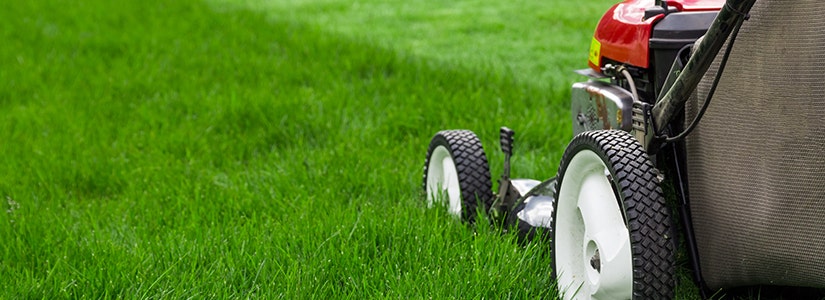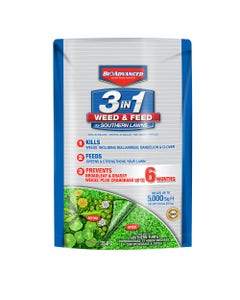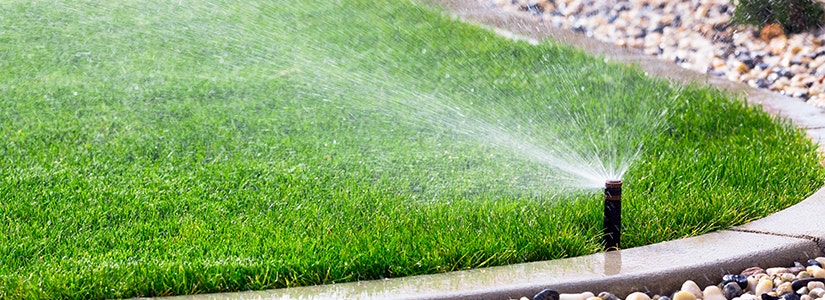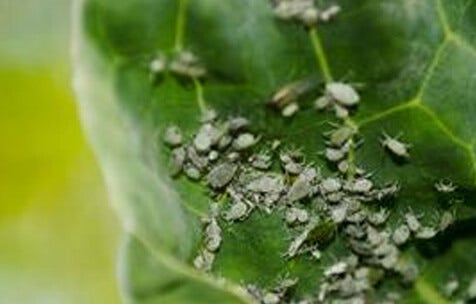

- Home
- Solution Center
- Learn
- Lawn and Landscape
- Lawn Mowing to the Right Height
Mowing Lawns to the Right Height
Each time you mow the lawn, you're creating conditions for grass to thrive – or to fail. Learn how to use mowing as a means to cultivate a healthier lawn, combat the growth of weeds and prevent lawn disease.
Mowing Enhances Grass Growth
It's easy to look at a lawn and think of it as a cohesive unit – a swath of green. You'll succeed even more with lawn care when you remember that a lawn is composed of individual grass plants. Like other garden plants, when you pinch (mow) grass plants, they branch and become fuller.
If you prune too many leaves (mow the lawn too short), grass plants won't have enough foliage to sustain growth. The resulting lawn will be thin, weak and sparse, as well as have a poor root system. This type of lawn is prone to weed infestations and lawn disease outbreaks.
If you don't prune (mow the lawn) grass frequently enough, plants become lanky, causing the lawn to lose its usefulness and possibly allowing it to harbor insects such as lawn Grubs and even small rodents. Grass that's too tall is also tough to mow.
If you prune (mow) grass at the right height, you'll create a low-maintenance, more drought-tolerant lawn that's not easily infested by weeds.
Recommended Mowing Height
Mowing turf at the proper height is vital to lawn health, but ideal height varies based on grass type, time of year, and growing conditions. Grass requires more frequent mowing during its peak growth period.
The most important mowing rule is never to remove more than one-third of the leaf surface at any one mowing. In other words, determine the ideal height for your grass and allow grass to grow one-third higher. To set mower height, place it on a flat surface and measure the distance from the ground to the blade.
For cool-season turf, such as Fescue or Kentucky Bluegrass, active growth occurs during spring and fall. Typical cool-season grass height range: 2.5-4 inches.
For warm-season grasses, including Zoysiagrass and Bermudagrass, peak growth occurs during summer. Typical warm-season grass height range: 1-3 inches.
During periods of peak growth, expect to mow the lawn once every 5-7 days. Conversely, during times of slowest growth, you'll mow less, if at all.
Follow these general guidelines for how high to mow the lawn. Determine regionally specific heights, and suggested seasonal variations, by contacting local Cooperative Extension System offices or sod or seed suppliers.
|
Grass Type |
General Grass Height (inches) |
|
Cool-season grasses |
|
|
Fine Fescue |
0.5-3 |
|
Kentucky Bluegrass |
0.75-3.5 |
|
Perennial Ryegrass |
0.75-2.5 |
|
Tall Fescue |
1.5-4 |
|
Warm-season grasses |
|
|
Bermudagrass |
0.5-2.5 |
|
Buffalograss |
1.5-4 |
|
Kikuyu grass |
1-1.5 |
|
St. Augustinegrass |
1-3 |
|
Zoysiagrass |
0.5-2 |
Aim for Taller Grass
It's best to mow the lawn at its tallest recommended height, especially during drought conditions or hot weather. Cool-season grass usually grows best when maintained at a taller height, as do grasses in shade. Taller grass has deeper roots, which can reach water more effectively. Taller grass also shades soil, which helps to reduce water loss and prevent weeds from invading your lawn.
Other Rules of Mowing
- Mow the lawn when grass is dry.
- Mowing during the cooler part of the day is easier on the mower.
- Mow the lawn with a sharp blade.
- Mow the lawn in alternating patterns and directions to avoid creating ruts and compacted soil.













